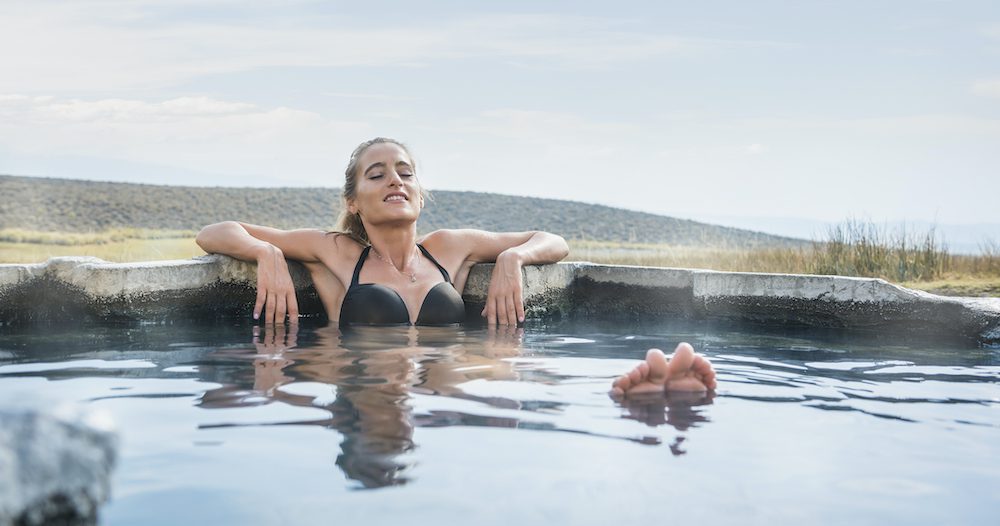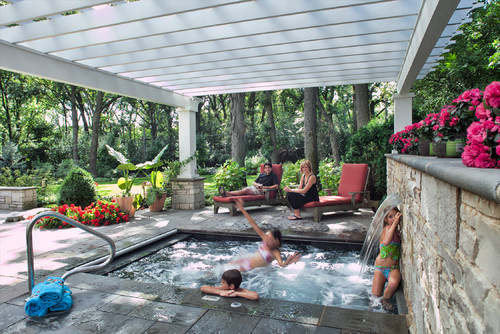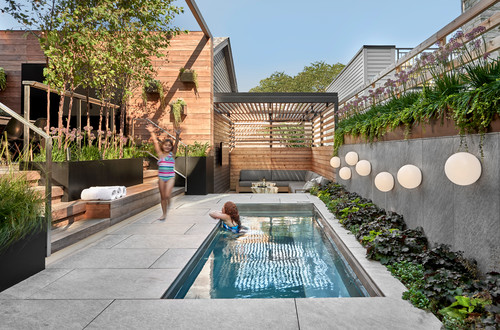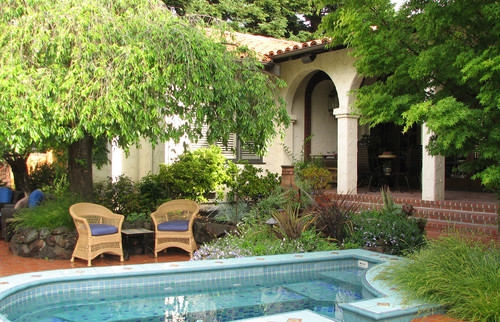
Jacobs Stock Photography Ltd / Getty Images
Homeowners are so desperate for a refreshing spot to chill this summer that they’re turning to all kinds of water sources, including DIY pools made from stock tanks used for cattle and neon plastic kiddie tubs (don’t judge!).
The need to stay safe at home has caused a run on all things fun in the backyard (think swing sets, trampolines, and fire pits).
Owning a pool, whether in-ground or above, tops the list of must-haves, especially during the coronavirus pandemic.
But what if you can’t shell out that much for a pool—and you’re still dying to cool off? You may want to consider a plunge pool, a pared-down version that’s conveniently sized for smaller yards and priced a bit less, too.
“Regular-size swimming pools are very dominating structures, so a plunge pool is an ideal option for those homeowners who don’t want the pool to be the center of attention in their yard,” says Michael Dean, a pool pro and co-founder of Pool Research.
Still, in terms of the code requirements, plunge pools follow all the same industry standards as bigger ones, according to Janay Rickwalder, vice president of marketing and communications for the Pool & Hot Tub Alliance.
“And the same equipment is used, including heaters, pool covers and the types of materials,” she says.
Ready to dive in? Here’s some more about plunge pools, including what they cost and the pros and cons of putting in a smaller spot for cooling off.
What is a plunge pool, exactly?
This little soaker is just what it sounds like—a small swimming pool that’s typically 4 to 8 feet deep, although many folks prefer a plunge that’s at least 6 feet.
“In terms of width, most plunge pools are 10 feet or less, and they can be installed above ground or in the ground,” says Dean.
Want a kidney-shaped plunge pool? You can have almost any design you’d like, say the pros, although most choose a simple square or round shape.
The pros and cons of plunge pools
 Photo by Hursthouse Landscape Architects and Contractors
Photo by Hursthouse Landscape Architects and Contractors
Got a tiny backyard? A 10-by-12-foot plunge pool could be the perfect fit. And if you’re looking for a restful place to sit quietly—rather than a space to do laps—the plunge option is smart.
“This kind of pool is a lot more comforting, because you feel enclosed by the walls, and you’re more at one with nature around you, since you’re sitting so close to it,” says Dean.
A full-size gunite pool can be upward of $60,000 to $70,000, so a plunge pool, while still an expensive item, can save you a little.
“They’re also simpler to maintain, purely because they’re smaller—you don’t have to deal with as many chemicals, and you’ve got a much smaller space to clean,” he adds.
However, if you’re a family with two or more kids, a plunge pool will fill up quickly and doesn’t lend itself to big games of Marco Polo or raucous chicken fights.
“Most homeowners who choose a plunge pool are older couples or families with grown children,” says Dean.
How much does a plunge pool cost?
Photo by dSPACE Studio Ltd, AIA
Costs vary depending on the materials you use, the features you want to add, which contractor you select, and your geographic location, says Rickwalder.
Dean reports that a custom plunge pool, on average, is likely to start at $25,000.
“Concrete gunite is typically the most expensive choice, at around $25,000 to $40,000, while fiberglass is less, at $10,000 to $25,000, and vinyl is the most affordable, running about $10,000 to $20,000,” he says.
If you go with a concrete pool, you’ll need to wait six to eight weeks for the excavation, installation, and finishing touches. (Other types may be finished a little quicker.)
However, if you want one this season, you may be out of luck.
“When the virus outbreak began,” says Dean, “pool inquiries dropped significantly, because people were quarantining and for safety reasons—but now they’ve picked up.”
Plunge-pool accessories
A cover that rolls on or pulls out from underneath the top edge of the pool is extra, alas, although a heater may be included in the price quote. (If not, you’ll need to budget an additional $15,000 or so.)
You can also add a set of steps for easier entry into deep plunge pools, as well as some strategically placed spa jets for underwater massaging.
Landscaping your plunge pool
Just as with larger pools, plunge versions can be customized in many ways, to fit the aesthetic of your backyard. Built-in planters, swaths of wild flowers, a pergola and outdoor lighting are just a few of the many options that can help you beautify the space.
Dean’s biggest piece of advice pertains to the surrounding landscape design.
“Plunge pools are meant to be peaceful, which means the more yours fits into your yard’s natural features, the better it’s going to look,” he says.
Consider nearby trees, the pathway you’ll take to the pool, as well as the bushes and shrubs to plant round the pool’s edges.
The post What Is a Plunge Pool? A Clever Way To Stay Cool Without Tons of Space appeared first on Real Estate News & Insights | realtor.com®.




No comments:
Post a Comment